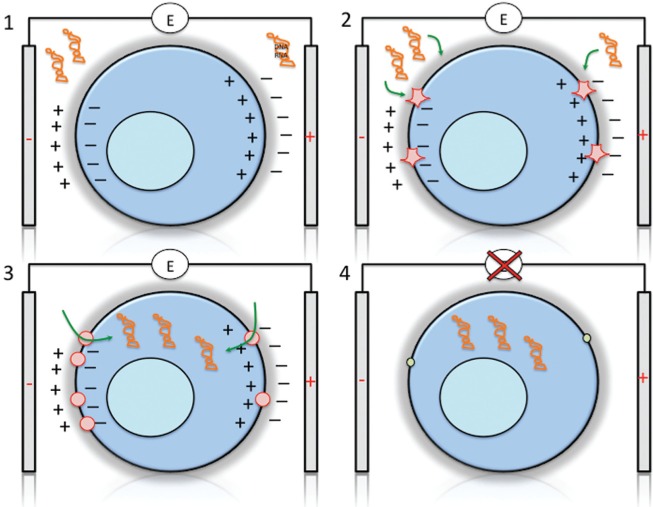Figure 2.
Electroporation of cells. Electroporation occurs through four main steps: (1) polarization of the cell, (2) rapture of the membrane creating nanopores, (3) entry of the macromolecules, and (4) resealing of the membrane. (1) Application of short electrical pulses will result in membrane charging, creating an electrical field and resulting in polarization of the cell. The strong electrical field will result in structural rearrangements of the membrane, creation of water-filled membrane structures (“aqueous pores”) and “nanopores” with a size of more than 1 nm that allow ionic transport. (2) Larger pores are formed in the membrane that allows influx of macromolecules such as DNA or RNA. Generally, more pores are formed at the site facing the negative electrode. (3) Large macromolecules can enter the cell. The negative charge of DNA/RNA can act as a drag to enhance uptake, although, on the other hand, positive ions such as calcium can enhance proximity to the negatively charged membrane prior to uptake. (4) Electroporation is reversible, and once the electric field is switched off, the membrane has the capacity to reseal and keep the macromolecules inside the cell. Resealing occurs on a much longer time frame (minutes to hours), whereas pore formation can occur within milliseconds. Low temperature can enhance resealing, although this may not be practical for eukaryotic cells in some applications.

